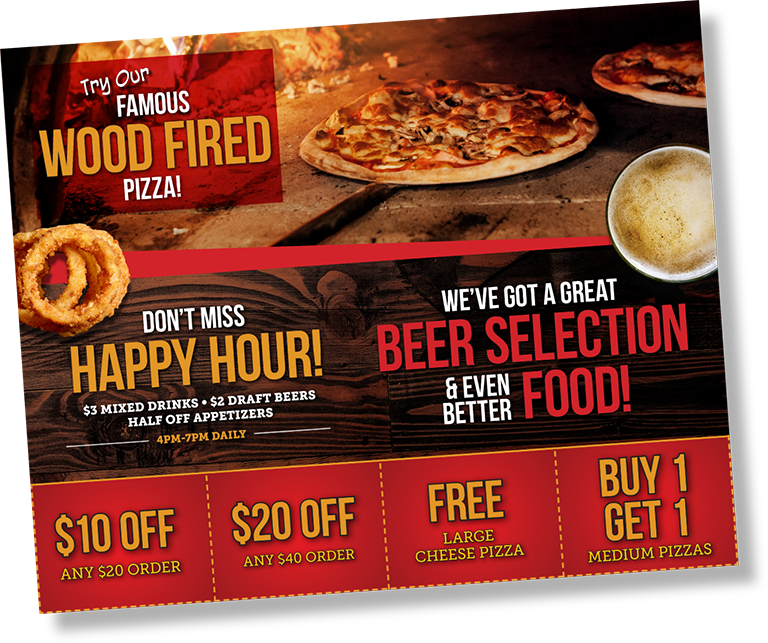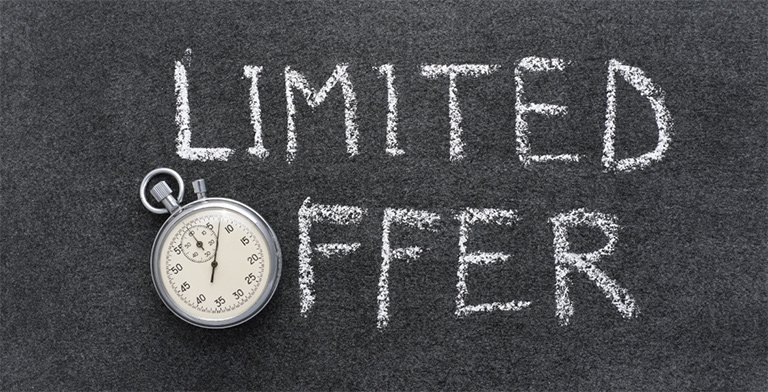Direct mail comes in many forms, from brochures and catalogs to letters and restaurant menus. But one of the most effective (and affordable) direct mail strategies is the postcard. A postcard mailer can be eye-catching and information packed, and designed to appeal to new customers and interest them in your business.
Unlike multi-page mailers, which require the customer to open them up to learn more about your business, postcards are an effective tool from the moment they land in the mailbox. Postcards can help you increase brand awareness, advertise sales and new products, and bring more customers into your store or restaurant.
Let’s take a look at some of the latest stats on direct mail strategies and some ideas you can use to improve your postcard advertising.

How Effective is Postcard Advertising?
First, how effective are postcards as a direct mail marketing tool? Won’t they just be an easy item for customers to throw away?
Consumers these days — including millennials — aren’t as averse to receiving mail as you might think. Online advertising and social media marketing haven’t replaced direct mail, and the most recent reports show average response rates of 5% and 9% for prospect lists and house lists, respectively.
In fact, a 2015 Gallup opinion poll shows that 36 percent of Americans under 50, and 56 percent of seniors over 65 “look forward to checking the mail each day”. So, while it’s a good idea to tailor your marketing to each demographic, postcards can be an effective tool no matter which age group you’re marketing to. According to a study called The Private Life of Mail, direct mail advertising is effective because it helps consumers keep your brand in mind over the long term. In addition to encouraging an immediate response, the best direct mail strategies lead consumers to remember your brand the next time they need your product or service.
The Private Life of Mail also found that 39% of respondents “display” their mail in their home — usually in the kitchen — offering additional chances for a postcard to grab their attention, or that of a visitor, family member, or roommate.
With that in mind, what are some strategies you can use to make your postcards stand out and lead to brand awareness and consumer engagement?

How to Improve Your Postcard Advertising
Postcards may be one of the most affordable forms of direct mail you can choose, but that doesn’t mean your creative options are limited. From the shape and size of your postcards, to the color and print quality, you’ll have plenty of options to make your postcard stand out from everything else in the mailbox. Here are just a few of the top strategies you can use to make your postcard advertising campaign a success:
Focus on the Design
Sometimes creating an effective postcard is less about what you say, and more about how you say it. Are you advertising a sale? Offering a coupon? Promoting an online service? Choose text and images that quickly convey the purpose of your campaign (think 8 seconds – the attention span of most consumers these days).
For example, a postcard for a pizza shop should include a phone number to encourage customers to place an order. But is a postcard the right place for a full restaurant menu? Probably not. A cluttered postcard will just distract from your message. Stick to two to four coupon specials that a customer will be eager to order right away.
Regardless of your business type, use simple words and phrases that get the most info across with as few distractions as possible. Use fonts and colors that are easy to read so your message comes across with a quick scan of the postcard. Remember, a big part of direct mail advertising is raising awareness for your brand, so above all else, design a postcard that incorporates your brand’s logo, colors, and any other features that your customers will associate with your business.
Involve Your Audience
Try to get your audience as engaged in your campaign as possible. This can range from a personalized message — such as sending a targeted mailer on a customer’s birthday — to a coupon code that you have to go online to redeem. For example, you could include a “secret” offer behind a scratch-off sticker or peelable pizza box sticker.
Not only will these strategies get customers interacting with your brand, they also offer ways for you to track the response rate of your campaign. You’ll see how many people showed up to your business to redeem their offer, and be able to tie it back to your mailing list.


Use Different Shapes and Sizes
While you may think of postcards as being a standard-sized item, you can customize the size and shape of your mailer to suit your campaign. Some businesses design postcards suited to their brand: for example, a pet store could mail postcards shaped like a bone, and a pizza shop could create a postcard shaped like a slice of pizza.
In addition, don’t be afraid to use different sizes to stand out from the crowd. Mail Shark offers several different postcard sizes, including Oversized, Jumbo, and Colossal. Larger postcards can convey more information and leave you room to include multiple coupons or images without making it feel cluttered. Plus they’re impossible to ignore.
Send a Follow-Up
A single postcard isn’t enough space to include everything you want a customer to know about your business. You can encourage them to look at your website, call your phone number, download your app, follow you on social media or keep your info on hand for future use. But for an ongoing relationship, you will need to send each customer more than a single postcard.
Why send another postcard if a customer hasn’t engaged with the first? It takes time to build brand awareness, and a lack of response could mean anything from bad timing to the fact that the sale or product you advertised wasn’t the right one for them. The most effective campaigns make more than one attempt to reach each consumer.
If they have followed-up with a postcard — which you may know based on the trackable coupon code, QR code, URL, or phone number you included on it — then be sure to send a follow-up. This can be as simple as a thank-you for their purchase, or an offer that’s only available for returning customers. This shows that you value your customers and gives them a reason to keep engaging with your brand.


Provide a Time Limit For Your Offer
Creating brand awareness is only worth the cost if a customer eventually responds to your campaign. A postcard magnet that a customer hangs on their refrigerator for a year might get noticed by all of their friends, but has anyone actually called the number?
Give your customers an incentive to respond to your postcard by including a time limit on any offers you provide. Whether it’s a coupon that expires in two months, a one-time-only offer, or a seasonal product that won’t be available for long, create a sense of scarcity or limited availability to make the most of your campaign.
This doesn’t mean you can’t send a similar coupon again in the future, but it increases the likelihood that a customer will engage now rather than put it to the side and forget all about it.
Example of a Great Postcard
The kind of postcard you design will depend on what kind of business you’re advertising and what sort of offer you include. A restaurant may be able to rely on the visual appeal of their food, while a doctor or dentist may need to provide more details, such as their credentials and what kind of insurance they accept.
Fortunately, Mail Shark has dozens of examples of effective postcard designs, as well as a template you can use to create your own. Let’s take a look at this sample postcard for Denver Pizza Company to see what a good postcard campaign looks like.
First, the front of this postcard does a great job of creating brand awareness. The logo is memorable and featured prominently on the postcard, as well as the tagline, “Colorado’s First 100% Wind Powered Pizza,” which sets it apart from its competitors.
Second, the postcard offers three easy ways to engage with the business: a website for online orders, a phone number, and a physical address. This makes it easy for recipients to engage right away, regardless of their preferred method of ordering. The reverse of the postcard includes some of the same content and contact info in a smaller font.
Visually, the designers of the postcard chose to keep it simple, with an image of a pizza on the front and a description of their pizza style on their back. Instead of including a full menu with all of their options and prices, they’ve included two special deals in order to encourage customers to place an order.
The postcard is memorable, actionable, and easy to understand. While it could include more marketing strategies, such as a limited time offer or a trackable QR code, the info it contains is designed to build brand awareness and appeal to new customers.

How We Can Help
Whether you’re starting your campaign from scratch or already have a postcard design in mind, Mail Shark can help you enact your strategy from start to finish. From design and printing, to mailing and evaluating the response to your campaign, we have experience working with a variety of industries and know what will work for your business.
Take a look at our postcard samples, try out our templates, or just fill out our online form to request a customized quote and receive a kit in the mail with some of our offerings. No matter what kind of postcard campaign you choose, we have the tools and the know-how to make sure your direct mail advertisements are a successful investment.
